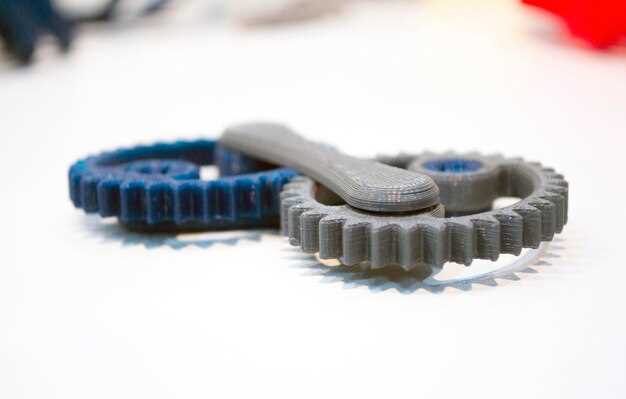
In the high-octane world of drag racing, every millisecond counts, and understanding the intricacies of gear ratios can be the difference between crossing the finish line first or being left in the dust. A well-optimized drivetrain allows drivers to harness the engine’s power and translate it into speed effectively. Gear ratios are pivotal in determining how torque is applied to the wheels, influencing acceleration and top speed.
At its core, a gear ratio defines the relationship between the number of revolutions of the driveshaft and the number of revolutions of the wheels. By selecting the appropriate gear ratio, racers can achieve a balance between quick acceleration off the line and sustained speed down the track. This balance is crucial, as an inadequate ratio can result in sluggish starts or a loss in power, while an overly aggressive ratio may lead to engine strain and reduced overall performance.
In drag racing, understanding the concept of gear ratios extends beyond mere mathematics; it requires an in-depth analysis of the vehicle’s engine characteristics, weight distribution, and driver preference. By mastering this knowledge, racers can tailor their setups for optimal performance, enabling their cars to achieve faster times and more successful runs on the drag strip.
How to Calculate Ideal Gear Ratios for Enhanced Acceleration

Calculating the ideal gear ratios is crucial for maximizing acceleration in drag racing. Gear ratios are determined by comparing the number of teeth on the drive gear to the number of teeth on the driven gear in the drivetrain. This ratio influences how power is translated from the engine to the wheels, significantly affecting acceleration and top speed.
To find the best gear ratio for your drag racing setup, begin with your vehicle’s engine characteristics, including horsepower and torque curves. Analyze the power bandwidth where the engine performs optimally to ensure you maintain it throughout the race. For example, if the engine peaks at a high RPM, shorter gear ratios may be ideal to keep the engine in its power band during acceleration.
Formula for Gear Ratio Calculation:
Use the formula: Gear Ratio = (Number of Teeth on Drive Gear) / (Number of Teeth on Driven Gear). Through this calculation, you can determine how quickly the wheels will turn in relation to the engine speed. Lower ratios (e.g., 3.0:1) provide better acceleration but can limit top speed, while higher ratios allow for increased top speed at the expense of acceleration.
After establishing the desired initial gear ratio, consider additional factors such as tire size and weight of the vehicle. Larger tires effectively alter the final gear ratio and can add to the vehicle’s acceleration. Similarly, a lighter car may perform better with shorter gear ratios, as it can accelerate faster without losing traction.
Test different gear ratios on the track to find the sweet spot that matches your specific combination of engine, drivetrain, and vehicle weight. Continuous adjustments alongside data analysis during practice runs will guide you toward the optimal setup for enhanced performance on race day.
Impact of Drivetrain Components on Gear Ratio Performance

The performance of gear ratios in drag racing is significantly influenced by various components of the drivetrain. A well-optimized drivetrain can enhance acceleration, increase top speed, and improve overall vehicle handling. Key components include the transmission, differential, and axle setup, all of which play a crucial role in translating engine power to the wheels.
Transmission selection directly affects gear ratios and thus performance. Automatic transmissions often offer a wider range of gear ratios compared to manual ones, enabling more effective power delivery. Additionally, the type of torque converter can impact the way power is harnessed from the engine, improving launch performance or altering shift points.
The differential gears are equally critical. A lower gear ratio can enhance acceleration, allowing the vehicle to reach its optimal power band more quickly. However, excessively low ratios may compromise top speed. Drag racers frequently choose a balance that allows for rapid acceleration without sacrificing the ability to maintain high speeds over the distance of a quarter-mile race.
Furthermore, the drive axles must be matched appropriately to the chosen gear ratios. Sturdier axles can handle the stresses produced during hard launches without failure, providing reliability to the performance setup. Incorrect axle specifications can lead to reduced power delivery and increase the risk of mechanical failure.
Ultimately, understanding the interplay between these drivetrain components and gear ratios is essential for optimizing a drag racing vehicle. Achieving the right balance maximizes performance, enabling competitors to achieve their best possible times on the drag strip.
Choosing the Right Gear Ratio for Different Drag Racing Conditions
Selecting the appropriate gear ratios is crucial for optimizing performance in drag racing. The right ratio affects acceleration, top speed, and overall drivetrain efficiency. Understanding how to tailor your gear selection for various racing conditions can be the difference between winning and losing.
In general, a lower gear ratio (higher numerical value) provides quicker acceleration off the line. This is particularly beneficial in short-distance races where rapid starts are essential. However, while lower ratios enhance traction and initial speed, they can limit top speed. Therefore, they are more suited for shorter tracks.
Conversely, a higher gear ratio (lower numerical value) allows for greater top-end speed. This setup is more advantageous for longer drag strips where maintaining speed becomes crucial. A well-balanced drivetrain setup can harness the benefits of a higher ratio without sacrificing too much acceleration.
Environmental conditions also play a significant role in gear ratio selection. For instance, on a slick track, a setup with a lower gear ratio can help minimize wheel spin and provide better launch control. In contrast, on a well-prepped surface, drivers may opt for a higher ratio to maximize speed potential over the distance.
Ultimately, the choice of gear ratio should consider both the vehicle’s characteristics and the specifics of the racing environment. Testing different ratios during practice runs can also yield valuable insights for fine-tuning performance on race day.



